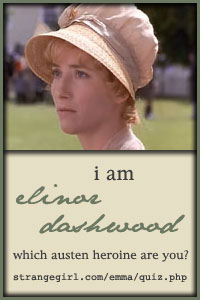Ecce Homo by Antonio Ciseri
9:02 AM
Ecce Hommo by Antonio Ciseri
A little bit of history
Date: 1871
Located in the Gallery of Modern Art, Florence.
The title of the painting "Ecce Hommo" is Latin for "Behold the Man": Pontius Pilate's words as he shows Jesus after His flagellation and the coronation of thorns to the crowd. Pilates is trying to convince the people that Jesus has suffered enough and needn't be crucified.
This painting was commissioned by the government of Italy in 1870 and Ciseri finished it a few days before his own death.1
A little bit of technique
The use of light and shadow is amazing. Pilate's clothes are transparent and there's great contrast between the hot sun of the background and the cooling marble of the foreground.
Many famous artists, like Caravaggio and Titian, portrayed this scene. What's unique about Ciseri's portrayal is that Jesus and Pilate are not facing the viewer. They have their backs to us and it is as if we are in the backstage of the scene. We are a character, maybe a servant or a centurion who was just passing by, heard all the screaming and stopped to see what's happening.
Because we can't see their faces, body posture is incredibly important. Pilate bends his body and puts his foot towards the crowd to get closer to them, arms pointing to the "man of pains" as if saying: "Isn't this enough?".
Christ's body posture is completely different. He looks down, motionless, patiently suffering.
A little bit of enthusiasm
What calls my attention, other than the extreme beauty of the painting, are the two "supporting" characters: the faceless crowd standing in the balconies at the top of the painting and Pontius Pilate's wife in the right corner of the painting.2
We can't see the faces in the crowd, but some figures at the roof tops have their arms raised. In their euphoria wouldn't they be screaming "Crucify Him!"?
Pilate's wife, on the other hand, is holding another woman for support. She can't even bear to look at what's happening. Before this all began she told her husband not to harm Jesus because she had dreamed about Him.
Maybe these two characters, Pilate's wife and (part of) the crowd, weren't Jesus' followers. Not everybody knew and believed He is the Son of God. I've always wondered how non-believers would react being witnesses to the Passion.
The painting shows these different, opposite reactions of people that weren't Jesus' disciples. The crowd's reaction was excitement in face of cruelty. At best they were just going with the flow, with what the majority wanted. Pilate's wife' reaction was sadness and compassion.
Image via Wikipedia
1 Treccani, the Italian Encyclopedia
2 Restored Traditions














8 comments
This is a great painting, although I still prefer Caravaggio, in general. I may be using this on an upcoming blog post - strangely, about a war poem which makes reference to this Biblical scene. I think your comments about perspective are very perceptive.
ReplyDeleteThanks for your kinds words! I love Caravaggio's paintings too, but I'm really excited when I discover lesser known painters like Ciseri.
ReplyDeleteI can't wait to read about the poem you mentioned. I wonder what the connection between war and the Passion will be.
It is definitely one of the greatest paintings I have ever seen. The contrast between the light and the dark colors is amazing and can catch our attention for hours.
ReplyDeleteThe appointed different perspective makes us get into the scene, as if we were a character, and somehow fell the suffering of Our Lord.
But to us one question remains: “Isn’t that enough?”. There is no need to more suffering.
I hope Pilate doesn’t listen to the crowd, but the heart of his wife.
Great post! xx
Thanks! It's truly an amazing painting, isn't it? Great for meditation! xx
ReplyDeleteBeautiful painting, indeed. Congrats for the post; very perceptive.
ReplyDeleteThanks, I really love this painting and wish more people know abut it. xx
ReplyDeleteThe artist hasn't researched what a Roman flogging was like. Jesus' back is still virtually intact.
ReplyDeleteI read somewhere that the figure in blue standing behind Pilate is actually Ciseri himself, in a prominent yet helpless role.
ReplyDeleteThanks for commenting! Do come back because I usually reply to comments here.